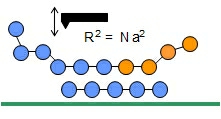
Kontakt
Institut für Physik
FG Experimentelle Polymerphysik
Prof. Thomas Thurn-Albrecht
Telefon: 0345 5525341
Telefax: 0345 5527160
Von-Danckelmann-Platz 3
06120 Halle/Saale
Sekretariat
Chanel Krebs
Telefon: 0345 55-25361
Telefax: 0345 55-25360
sekr.polysurf@physik.uni-ha...
Raum 2.25
Von-Danckelmann-Platz 3
06120 Halle
Abschlussarbeiten (Bachelor/Master/Ph.D)
Bachelor- und Masterstudenten forschen mit Unterstützung und Anleitung von Doktoranden und Postdocs unter der Aufsicht von Prof. Th. Thurn-Albrecht.
Abschlussarbeiten (Bachelor-, Master-, Projekt-Arbeiten) in unserer Gruppe tragen in der Regel zu unseren aktuellen Forschungsprojekten bei.
Für nähere Informationen wenden Sie sich bitte an Prof. Thurn-Albrecht:
thomas.thurn-albrecht@physik.uni-halle.de
Aktuelle Themen für Bachelor- und Masterarbeiten finden Sie in StudIp in den jeweiligen Veranstaltungen.




